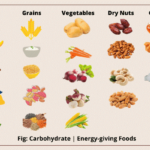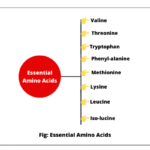What are Alloys: Types, Properties, Examples
Definition: Alloys are a homogeneous mixture of two or more than two metals, or a metal or a non-metal. Any physical methods can not separate into their constituents (or components) them.
They may have variable composition but show the properties of their components, therefore, they are considered as a mixture.
The meaning of the term ‘alloy’ is the “mixture of metals”. It is a substance formed from the combination of at least two different kinds of chemical elements, one of which must be metal. Many of the metals that we use in everyday lives are actually alloys. Examples of alloys are brass, bronze, stainless steel, duralumin, nichrome, etc.
Table of Contents
How are Alloys Formed?
When two or more chemical elements are melted together and resulting liquid is allowed to solidify, the substance so obtained is called an alloy. In other words, an alloy is mixing of two or more metallic elements together in the molten state and then allowing the resulting liquid solution to cool and re-solidify.
Thus, an alloy is a homogeneous mixture of metallic elements existing in a solid phase. It must possess metallic properties of their components. The most important metallic component of an alloy is called main metal or parent metal or base metal. Other components of an alloy may be metals or non-metals present in a much smaller amount.
For example, a pure gold (24 K) is a comparatively soft element and is easily bent. When we mix it with other elements, it becomes hard.
(a) A gold (18 Karat) contains 75% (by mass) gold with the rest silver and/or copper.
(b) Stainless steel is a mixture of three elements: 80% iron, 12% chromium, and 8% nickel.
(c) Aluminium is light metal but not strong. But, when we mix it with copper, manganese, and magnesium, it becomes light and strong.
(d) Aluminium is light metal but not hard. But when we mix it with magnesium, it becomes light as well as hard.
(e) Iron is the most widely used metal, but it never occurs in pure form. Pure iron is very soft and stretches easily when hot. When we mix it with a small amount of carbon, we obtain an alloy called steel. On mixing iron with chromium and nickel, an alloy called stainless steel is obtained, which is strong, tough and does not rust at all.
Physical Properties of Alloys
There are the following important physical properties of alloys. They are as:
- Alloys are harder than their component metals.
- They are more resistant to corrosion as compared to pure metals.
- They are more durable than the metals they are composed of.
- The electrical conductivity of alloys is lower than that of pure metals.
- Alloys have a lower melting point than the metals from which they are composed of.
- Alloys have greater ductility than their component metals.
Types of Alloys
There are mainly two types of alloys. They are:
- Ferrous
- Non-ferrous
Ferrous alloys are metals that mostly contains iron, carbon and one or two of the other elements, such as copper, manganese, nickel, chromium, vanadium, molybdenum, tungsten.
When the percentage of carbon in an alloy is less than 0.1, it is called iron alloy. If the percentage of carbon in an alloy is above 0.1, it is called steel alloy.
Non-ferrous alloys are metals in which there is no iron present.
Different Types of Alloys and their Composition
Some of the most common alloys are brass, bronze, steel, stainless steel, solder, amalgam, etc. The compositions of different types of alloys are as below:
(a) Alnico is a metal alloy that mainly consists of more than 50% of iron, aluminium (8-12%), nickel (15-25%), and cobalt (5-40%). Other metals such as copper and titanium can also be mixed to improve characteristics. It is mainly used for making magnets in loudspeakers and electric guitars.
(b) Amalgam alloy is composed of mixing of mercury (45-55%), plus silver, tin, copper, and zinc. It is mainly used in dental fillings.
(c) Bronze was the first alloy to be discovered. It mainly consists of (78 – 90%) copper and (5 – 22%) tin. To improve the overall characteristics, a very small amount of aluminium, phosphorus, zinc, nickel, or manganese can also be mixed.
(d) Brass alloy comprises (60-80%) copper and (20-40%) zinc. Other constituents can be added in smaller quantity. It is used for making utensils, condenser tubs, electrical goods, musical instruments, etc.
(e) Cast iron is formed by mixing (96-98%) iron, (2-4%) carbon, plus a very small amount of silicon. It is utilized for making bridges, and heavy duty cookware.
(f) Duralumin mainly contains 94% aluminium, 5% copper, and a very small amount of magnesium and manganese. It is used for making automobile and aircraft body parts and military equipment.
(g) Gunmetal is made by mixing of 87% copper, 10% tin, 3% zinc, and very small amount of phosphorus. It is mainly used for guns and machine parts.
(h) Magnox is made up of mixing of two elements such as magnesium and aluminium. It is used in nuclear reactors.
(i) Nichrome is a metal alloy composed of mainly 80% nickel and 20% chromium. It is utilized for making firework ignition devices, heating elements in electrical appliances.
(j) Solder is formed by mixing (50-70%) tin, (30-50%) lead, copper, antimony, and other metals. We use it for soldering electrical components in electrical circuit.
(k) General Steel is made by mixing (80-98%) iron, (0.2-2%)carbon, plus other metals such as chromium, manganese, and vanadium. It is widely used in making metal structures, car and airplane parts, and many other uses.
(l) Stainless steel is made by mixing more than 50% iron, (10-30%) chromium and smaller amounts of carbon, nickel, manganese, molybdenum, and other metals. It is mainly used in making jewelry, medical tools, tableware, utensils, etc.
(m) Sterling silver is a mixture of 92.5% silver and 7.5% copper. We use it in making cutlery, jewellery, medical tools, and musical instruments.
(n) Gold (18 carat) is composed of mixing of 75% gold, 17% palladium, 4% silver, and 4% copper. We use it to make jewellery. In India, gold ornaments consist of 22 carats of gold. So, 22 carats of pure gold are alloyed with either silver or copper.
(o) Wood’s metal is a mixture of 50% bismuth, 26.7% lead, 13.3% tin, and 10% cadmium. It is utilized in soldering, making electrical fuses, and other safety devices.
Common Uses of Alloys
We use alloys in several ways in our daily lives. Some of the most common uses of alloys are as below:
- Brass is used for making cooking utensils, screws, bolts, door locks, electrical appliances, zippers, brass musical instruments, decoration, central heating pipes, and gift items.
- Bronze is used to make decorative statues, cooking utensils, coins, medals, musical instruments, and among other things.
- Alnico is a ferromagnetic substance and used for making magnets in loudspeakers, and pickups in electric guitars.
- Solder is used for connecting electrical components in circuits.
- Medical tools, jewellery, musical instruments, and cutlery are all composed of sterling silver, which is a mixture of silver and copper.
- We use stainless steel in the construction of railways, bridges, roads, airports, etc. It is also used for making cooking utensils, medical tools, jewelry, and other items.
- Alloys of aluminium, zinc, and magnesium are extensively used for making bodies of aircraft and their parts because they are lightweight.
- Amalgam is an alloy of mercury, plus silver, tin, copper, and zinc that is used in medicinal procedures. Dentists also utilize it to fix cavities in teeth.
- Certain alloys of gold, such as rolled gold are used for making artificial jewellery.
- Wood’s metal is used for making electric fuses and other safety devices.
Frequently Asked Questions based on Alloys
1. What is an alloy? Define it.
An alloy is a homogeneous mixture of two or more than two metals or a metal or a non-metal in definite ratio. For example, brass is an alloy of two metals: copper and zinc. Stainless steel is an alloy of iron, chromium and smaller amounts of carbon, nickel, manganese, molybdenum, and other metals.
2. What are some familiar examples of alloys?
Some familiar examples of alloys are: brass, bronze, steel, nichrome,
duralumin, solder, cast iron.
3. What are commonly used elements for making alloying?
List of five most common alloying elements is as below:
Copper, Lead, Zinc, Chromium, Vanadium, Molybdenum, Nickel, Manganese







